Metal Construction News article: Rheinzink
August 21, 2017
Renovating a Historic Cathedral
RHEINZINK protects and preserves heritage of 120-year-old church
Built in 1894, Christ Church Cathedral was the first church in Vancouver, British Columbia, Canada. Over the past 22 years, the church underwent a major four-phase renovation, which concluded with the total replacement of its roof. The church’s original roof was cedar shake, and over the years, various additions and modifications were undertaken, but none contributed significantly to the historic structure’s long-term sustainability.
In 1995, a formal master plan was undertaken to make the cathedral structurally sound and to meet seismic stabilization requirements. As part of the multiphase plan, the church underwent aesthetic and acoustical upgrades, in addition to basic functional improvements. “The purpose of the most recent and final phase of the restoration was to replace the roof for critical weather protection, thermal and acoustic upgrades, while completing the seismic diaphragm, accepting the parameters of working on a designated Heritage building and the need to work closely with the City of Vancouver Heritage Planners under the purview of the Vancouver Heritage Commission,” says Ron Clay, MRAIC, associate at Vancouver-based Proscenium Architecture & Interiors.
 A Modern Marvel
A Modern Marvel
The project’s final stage of replacing the roof became a modern marvel in Vancouver, as the entire building was completely enclosed in a massive scaffold with a giant tarpaulin covering. This was to protect the church from weather as the existing roof was removed. To allow use for a traveling gantry crane, which moved materials to all areas of the roof, the scaffolding reached 100 feet high.
Workers had to be in full HazMat gear to remove the existing roof, since the artificial slate material was bonded with asbestos. Additionally, the felt layers contained asbestos and the plywood layers underneath were contaminated by lead dust.
Before the new zinc roof could be installed by Vancouver-based TEK Roofing, it was necessary to get a level and true substrate, as the structure had settled and shifted considerably in the years since it was originally built. Additionally, construction methods were different a century ago. “We were surprised at how bad the structure was when we opened the building up,” says Ian Birtwell, a parishioner and volunteer project manager who functioned as liaison with the church. “The connections to walls were very poor-basically gravity connections. That’s the way they built in those days. And the roof ridgeline dipped 6 inches. We used a laser system to create a computerized 3-D model that revealed the high spots and low spots so that we could get a totally flat roof.”
Clay notes that much consideration, review and debate went into the retrofit roof construction assembly, to produce a system that was both economical and effective at achieving the current ideals for envelope, thermal and acoustic performance.
Pacific Building Envelope Maintenance Ltd. (PBEM), Delta, British Columbia, also helped in leveling the structure. “PBEM did a lot of the framing working under the supervision of our superintendent,” says Terry Kellogg, president, TEK Roofing. “PBEM was very instrumental in getting us a level roof. It was a tough, tough job. They added a huge amount of structural steel. We couldn’t have done it without them.”
 Durable and Maintenance Free
Durable and Maintenance Free
Woburn, Mass.-based RHEINZINK America Inc. supplied approximately 12,000 square feet of its prePATINA blue-gray RHEINZINK material for the roof, which was installed in a traditional batten seam profile.
Hugh Cochlin, Architect AIBC, AAA, MRAIC, LEED AP, principal at Proscenium, says good Heritage practice requires the renovation be respectful of original materials. “Slate was initially suggested by several interested parties but its weight was problematic for the seismic upgrade,” he explains. “We gravitated to zinc pretty early in the process. We wanted a durable material that would last forever. We expect to get 100 years or more from the RHEINZINK. Plus it looks contemporary but is respectful of good Heritage practice. The Heritage Commission quickly approved our use of it.”
RHEINZINK’s traditional prePATINA blue-grey color was another reason for selecting the zinc, along with its ability to repel moss. “Zinc was a natural choice for a Heritage cathedral as its appearance will patina over time to register the prevailing conditions,” Clay says.
“Everyone likes the way the blue-grey RHEINZINK complements the natural stone on the building,” Cochlin adds.
 Old-School Practices
Old-School Practices
Cochlin says all details were drawn by hand. “That’s definitely old school, but particularly appropriate for a Heritage project. We worked closely with TEK Roofing and had many on-site meetings. There was definitely more collaboration with the installer than is the norm today.”
“Due consideration was given to each integral component of the refurbishment/reconstruction details, which is clearly and concisely represented in the hand drawings,” Clay adds. “Of primary concern to the design team was the subtleties, accuracy, consistency and integrity of the hand drawings could have been compromised if translated to CAD.”
“The RHEINZINK panels are literally all hand formed,” Kellogg says, adding that he’s an old-school guy and everything the company does is traditional. “No machines were involved other than our breaks. The traditional method is just more exact in terms of the details because you are fabricating every single piece.”
The detailing was complex with multiple interfacing, and complicated transitions. “There was no caulking, no screws-all traditional methods,” Kellogg says. “There were lots of pitch changes and elevation changes that made the installation timeintensive. It was definitely a labor of love.”
Additionally, the drainage system used the traditional 6-inch RHEINZINK half-round gutters with RHEINZINK hangers, outlets and expansion joints. Five-inch gutters were used on several small dormers. “It’s a beautiful system and complements the scale of the roof,” Kellogg adds.
To complete the project, TEK crew ranged from 10 to 20 individuals, depending on what needed to be done. Kellogg worked alongside his crew for much of the job, spending nearly two months on the tools. “It was quite enjoyable,” he says.
http://www.metalconstructionnews.com/articles/magazine-features/renovating-a-historic-cathedral.aspx
Christ Church Cathedral, Vancouver, British Columbia, Canada
General contractor: Scott Construction Group, Burnaby, British Columbia, Canada, www.scottconstructiongroup.com
Architect: Proscenium Architecture & Interiors, Vancouver, www.proscenium.ca
Framing/building envelope maintenance: Pacific Building Envelope Maintenance Ltd. (PBEM), Delta, British Columbia, www.pbemltd.com
Distributor: Alesther Metals, Burnaby, www.alesthermetal.com
Installer: TEK Roofing, Vancouver, www.tekroofing.ca
Metal roof panels/gutters: RHEINZINK America Inc., Woburn, Mass., www.rheinzink.us



 A Modern Marvel
A Modern Marvel Durable and Maintenance Free
Durable and Maintenance Free Old-School Practices
Old-School Practices